Our raised bed garden was so productive we have more green peppers and eggplants than we can eat! Since there are so many delicious recipes for these vegetables, I’ve decided to dehydrate them and use them in the future. So, I’m preparing our excess green peppers and eggplants to go into the dehydrator. Weeks or months later I’ll include them in a variety of tasty dishes such as Eggplant Parmesan or a winter vegetable soup that includes our dried green peppers.
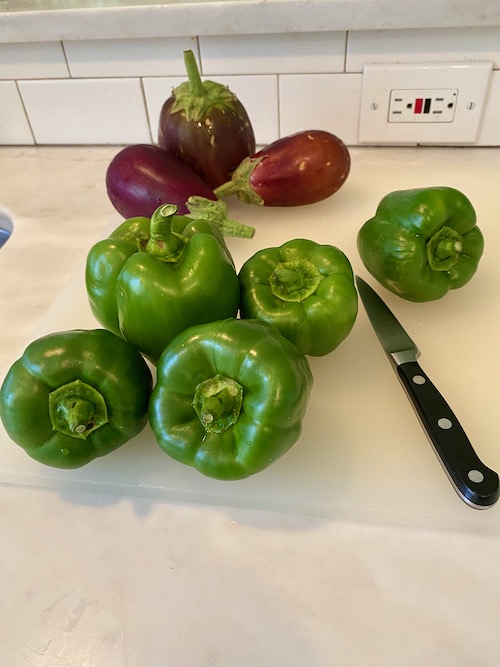
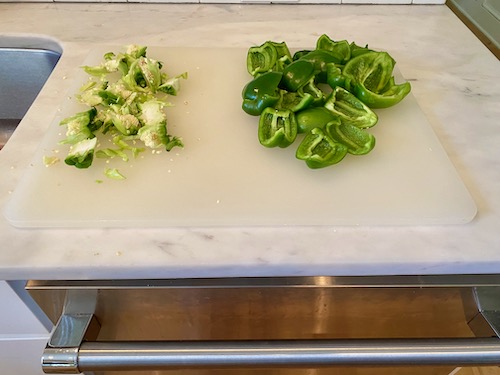
Preparing Green Peppers To Dehydrate
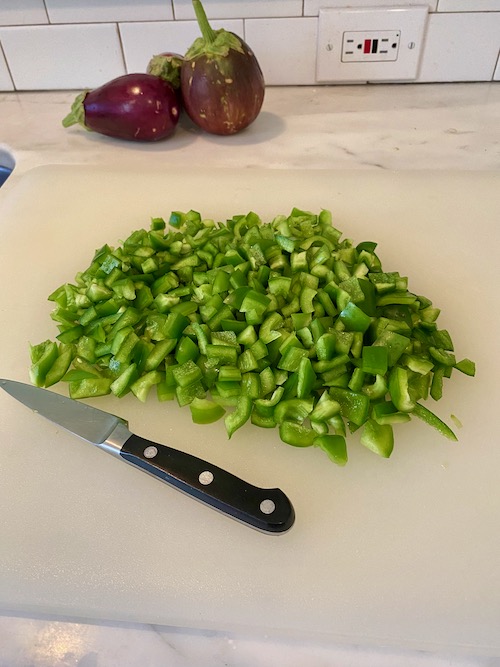
The peppers were the simplest of the two veggies to dehydrate. I hand selected this batch of peppers while they were at their peak of green, cleaned them well with water and cut them into small, very similar sized pieces. Consistency in the size of the pieces is important so the peppers will dehydrate at the same rate. As the above video link illustrates, I carefully removed the soft, light-colored ribs that are inside the peppers. After spreading the pieces evenly around the dehydrator trays, it was just a waiting game for the next few hours. I checked the peppers regularly and removed completely dried pieces from the trays. After a few more checks, all the peppers were sufficiently dry.
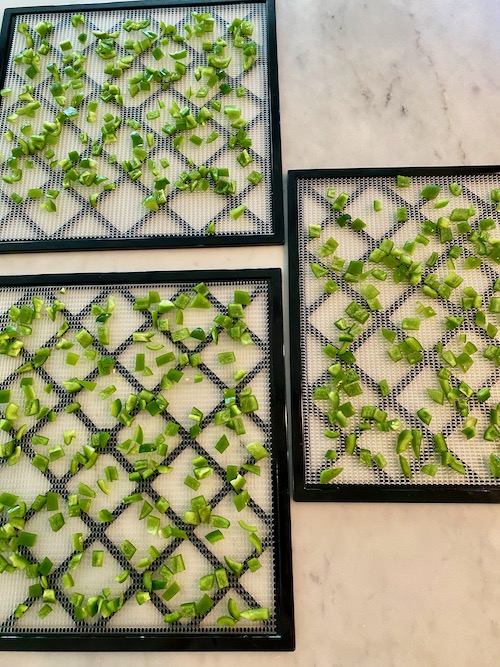
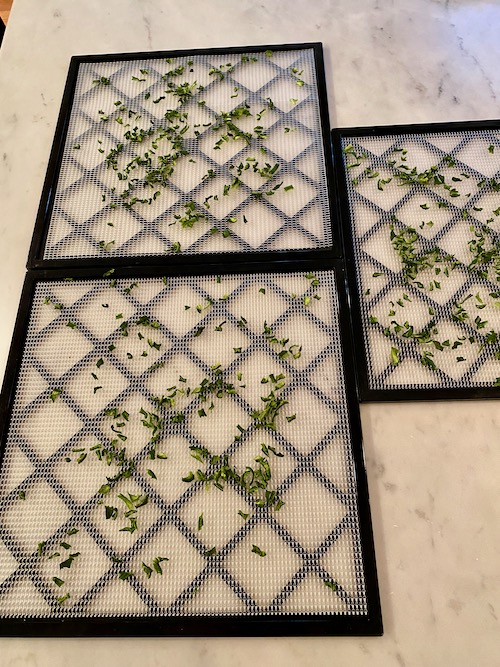
Going From Green Pepper To Red Pepper…Just By Waiting!
I left the next batch of green peppers on the vine a longer period of time so they would turn red. Red peppers have more beta-carotene and vitamin C in them. And, they are sweeter tasting than green peppers which allows me to use them in broad base of recipes.
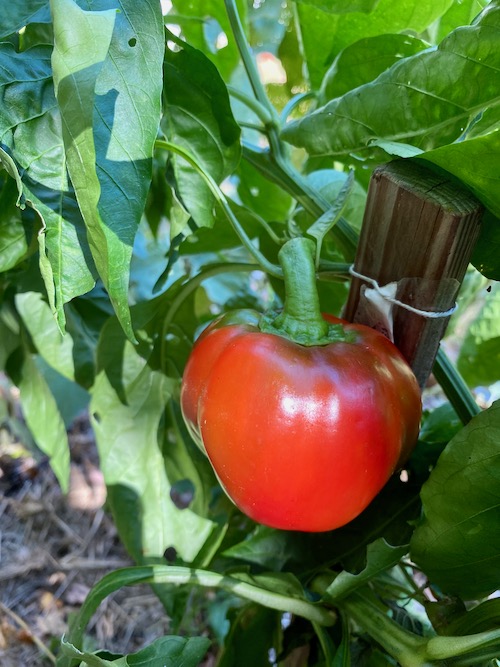
Dehydrating Eggplants…It’s A Process!

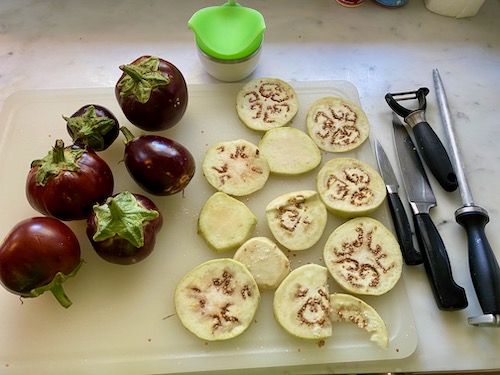
Dehydrating eggplants was a bit more labor intense than the green peppers. I suggest you prepare eggplant slices one reasonably sized batch at a time. They require a fairly quick turnaround as they tend to discolor quickly. So, it’s important to peel, slice and steam them and start the dehydration as soon as possible.
How To Prepare Eggplant For Drying:
- Wash then peel each eggplant and cut into 1/4 inch thick rounds. Add a touch of salt to each piece. You can also dice the eggplant if that is your preference.
- Blanch eggplant pieces (submerge in boiling water) for 1 minute or steam for 3-4 minutes (suspend over boiling water). We do this because blanching or steaming interrupts enzyme activity which causes loss of flavor, color and texture. Blanching the eggplants before drying them helps extend their life once dried.
- After blanching or steaming for the appropriate timeframe, immediately submerge the eggplant in ice water to stop the “cooking.” If you’re doing several batches, change the ice water if it becomes discolored.
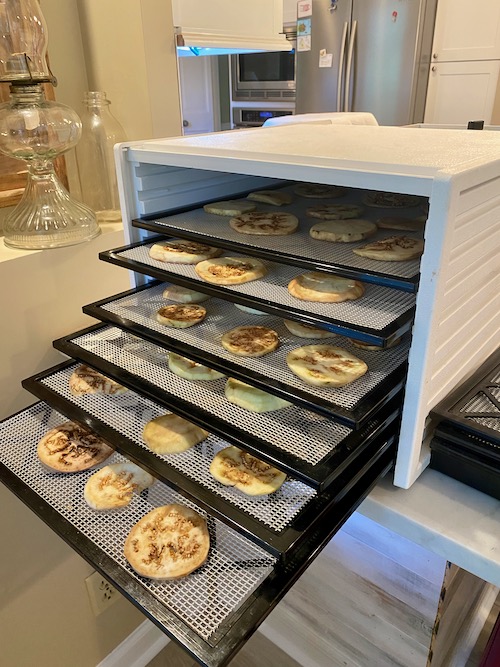
Dehydrating and Storing Eggplant
- Spread blanched eggplant slices/pieces evenly over trays and place in dehydrator.
- Drying time will vary based on your dehydrator, temperatures, thickness, etc., so check the process regularly; move, turn, and flip pieces as you see necessary, then continue dehydrating.
- Dry at about 140 degrees F (60°C) depending on your oven or dehydrator. Check and turn large pieces every 3 to 4 hours while drying. Vegetables tend to scorch as they get drier, so look closely as they reach the end of the drying cycle. You’re looking for a leathery to brittle texture.
- Place cooled eggplant in plastic bags or place in jars to keep moisture out. Vacuum packaging works well to keep eggplant dry.
- To rehydrate eggplant, immerse in purified water and soak for about 40 minutes, or more if necessary. Initially it won’t be moist like fresh eggplant, but it will rehydrate well enough for recipes.
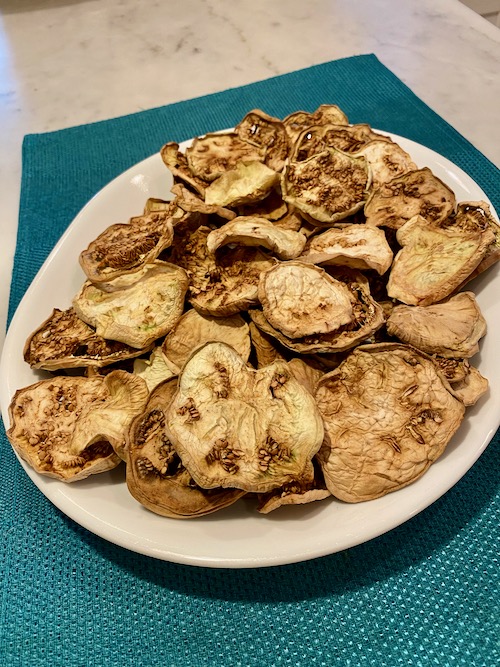
We built our raised bed garden early spring and it certainly has delivered on our expectations. We’ve enjoyed peppers, eggplant, tomatoes and cucumbers this year and plan to extend the variety of veggies even more next spring. Now is also the time to start cleaning up the rest of the yard for winter. Perennials need a good trim, some bulbs need to be dug up, and the rain barrel will soon need a thorough cleaning.
Nothing has been said about what to use and eggplant for. I got several and I have no idea what they’re good for once they’re dried. I just thought it would be a good idea to dry them, and perhaps the recipe would come along. I was wondering if we could make them into powder and use some and stews and soups
I don’t see why that wouldn’t work! I also saw online where some add dried eggplant to “smoothies, yogurts, and beverages to boost taste.